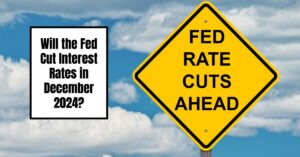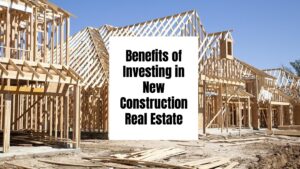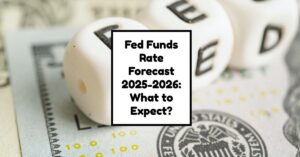Are you planning to buy or sell a home in 2025? Mortgage rates to stay above 6% in 2025, according to the Realtor.com® economic research team, and this could impact your home buying or selling journey. While there might be some slight improvements in the housing market, including a larger supply of homes for sale, the elevated mortgage rate environment will likely persist. Let's dive into the details of this prediction and what it might mean for you.
Mortgage Rates To Stay Above 6% in 2025: What Homebuyers and Sellers Should Expect
The 2025 Housing Forecast: Mortgage Rates and Home Prices
The Realtor.com® economic research team has released its housing forecast for 2025, and it paints a picture of a housing market where mortgage rates are expected to stay above the 6% mark. Specifically, the forecast anticipates that the average mortgage rate for 2025 will be 6.3%, dropping slightly to 6.2% by the year's end.
This prediction is significant because it means that while the average rate is expected to decrease from the 6.7% predicted for the end of 2024, it's still considerably higher than the historical average of 4% observed between 2013 and 2019.
Personally, I find this prediction to be a bit concerning for those looking to buy a home. While a slight decrease from the projected rate in 2024 is good news, 6% is still a relatively high level. I believe this will continue to put pressure on buyers, especially those with limited budgets.
This forecast also indicates that home prices will continue to rise, albeit at a slower pace than in recent years. Home prices are predicted to grow by an additional 3.7% in 2025, following a 4% increase in 2024 and a 1.1% rise in 2023. This means that even with a slight moderation in price increases, homes are likely to remain expensive in 2025.
Impact on Homebuyers in 2025
The outlook for prospective homebuyers in 2025 is a mix of good and bad news. While the forecast projects that the market might become a little friendlier with more homes for sale and some price reductions, the persistent mortgage rates above 6% will likely keep homeownership out of reach for some.
- Elevated Mortgage Rates: Homebuyers shouldn't expect a dramatic decline in mortgage rates back to the levels seen in September 2023 (near 6%). Instead, they should plan their budgets and finances around the mid-6% range.
- Affordability Still a Challenge: Even though the forecast projects a slight improvement in affordability, this won't be driven by falling home prices. Rather, any gains will likely stem from rising wages or increased disposable income, such as from tax breaks. I believe that this indicates that there will still be a significant challenge for people to afford a home in 2025.
- Increased Inventory & Price Reductions: There's some good news. The supply of homes for sale is expected to increase, reaching levels last seen before the COVID-19 pandemic. In October 2023, approximately 20% of listings featured price reductions, showing a shift in the market towards a more balanced buyer-seller dynamic.
- More Time to Decide: The increased inventory is likely to give buyers more time to evaluate options and make decisions. However, it's still advisable to be prepared financially and strategically in order to snag the best deal.
Example: Let's say you are looking for a home with a price of $300,000. With a 6.3% mortgage rate, your monthly mortgage payment would be significantly higher than it would have been with a 4% mortgage rate. This means that you would either need a larger down payment to afford the same house, or you might need to consider a less expensive home to stay within your budget.
In short: While the forecast indicates a slightly more buyer-friendly market with increased supply and some price reductions, the persistence of elevated mortgage rates above 6% in 2025 will still make home buying a challenge for many people.
Recommended Read:
Forecast for Home Sellers in 2025
Sellers in 2025 can expect a shift away from the strong seller's market that has characterized recent years. The market is heading towards a more balanced state, where buyers and sellers have more equal footing.
- Balanced Market Power: The shift towards a balanced market means that sellers will need to be more strategic in their pricing and approach to attract buyers.
- Careful Pricing: In areas where affordability is a concern, sellers will need to be cautious about pricing their homes too high. I believe that those who are not flexible with pricing will struggle to find buyers.
- Incentives Could Help: Offering incentives to buyers, such as covering closing costs, could help sellers stand out and attract potential buyers.
- Desirable Locations Still Favorable: In desirable areas with strong demand and limited inventory, sellers might still have an advantage in negotiations.
- Flexibility is Key: In my experience, sellers who are flexible and willing to adapt their strategies will be more successful in selling their homes.
Example: Let's say you are selling your home in a suburb with high demand and limited inventory. You might still be able to get close to your asking price. However, if you are selling in an area with a lot of inventory and more competition, you will likely need to be more flexible with your pricing and willing to negotiate.
The Bottom Line for Sellers: The market will be more balanced and competitive. Sellers who understand the nuances of the shifting market and adapt their strategies will be best positioned to achieve their goals.
Rental Market Trends in 2025
The rental market is also expected to see some changes in 2025.
- Slight Rent Decline: Asking rents are projected to drop slightly by 0.1% in 2025, following a small dip in 2024 and a 1.2% growth in 2023.
- Moderated Rent Growth: The projected rent growth is far lower than the average annual increase of 5.2% experienced between 2013 and 2019.
- Increased Rental Supply: This moderation is likely due to the expansion of new multifamily housing units in recent years, easing supply constraints in certain cities.
- Rental Vacancy Rates: While vacancy rates have risen since the pandemic's start, they remain below the historical average. I believe that this will further moderate rent growth.
- Regional Differences: The South is expected to see the most significant growth in rental stocks, followed by the West, Midwest, and Northeast. This suggests that the South might offer a relative affordability advantage.
Example: If you are considering renting in 2025, you might find that the overall increase in rental inventory leads to a bit more choice and a slower pace of rent increases than in recent years. You might also find that the South offers slightly more affordable options compared to other regions.
In a Nutshell for Renters: Expect a more balanced rental market with a slight decline in rents and a potential increase in rental inventory. The South might offer more affordable options.
Factors Contributing to the Forecast
Several factors are driving the predictions for mortgage rates above 6% and other market dynamics in 2025.
- The Federal Reserve's Actions: The Federal Reserve has been actively raising interest rates to combat inflation. I believe that the Fed will likely continue to monitor inflation and adjust rates accordingly. This could potentially influence mortgage rates.
- Inflation and Economic Conditions: Inflation has been a significant factor impacting the housing market. It's a major factor impacting borrowing costs.
- Housing Supply and Demand: The shift towards a more balanced market with an increase in inventory and some price reductions is a result of market forces, such as changes in buyer and seller behavior.
Preparing for the 2025 Housing Market
Whether you're a buyer, seller, or renter, it's wise to be prepared for the market conditions that are anticipated in 2025.
- Buyers: Begin planning your finances now. Get pre-approved for a mortgage, understand your budget, and be prepared to move quickly when you find a suitable property.
- Sellers: Work with a real estate professional to determine a competitive listing price. Consider offering incentives to buyers to make your home stand out. Be prepared to negotiate.
- Renters: Monitor the rental market in your area and be prepared to compare different options.
Conclusion
The housing market in 2025 is expected to be a bit different from the recent past. Mortgage rates to stay above 6% and home prices are expected to continue to rise, albeit at a slower pace. The increase in housing inventory and some price reductions could create a more balanced market for buyers. However, the higher mortgage rates are likely to remain a significant hurdle for many.
In my opinion, the housing market will continue to be influenced by factors such as inflation, interest rates, and the supply of homes. I believe that buyers will need to be prepared for a more competitive market, while sellers should adapt their strategies to attract buyers.
As always, the best approach is to work closely with a real estate professional who can provide you with insights specific to your location and situation. Stay informed about market trends and be prepared to adjust your plans accordingly.
Partner with Norada, Your Trusted Source for Turnkey Investment Properties
Discover high-quality, ready-to-rent properties designed to deliver consistent returns. Contact us today to expand your real estate portfolio with confidence.
Reach out to our investment counselors:
(949) 218-6668 | (800) 611-3060
Recommended Read:
- Half of Recent Home Buyers Got Mortgage Rates Below 5%
- Mortgage Rates Need to Drop by 2% Before Buying Spree Begins
- Mortgage Rates Predictions for the Next Three Months Q4 2024
- Mortgage Rates Predictions for 2025: Expert Forecast
- Prediction: Why Mortgage Rates Won’t Go Below 6% in 2024?
- Will Mortgage Rates Ever Be 3% Again: Future Outlook
- Mortgage Rates Predictions for Next 2 Years
- Mortgage Rate Predictions for Next 5 Years
- Prediction: Interest Rates Falling Below 6% Will Explode the Housing Market
- Mortgage Rate Predictions: Why 2% and 3% Rates are Out of Reach
- How Lower Mortgage Rates Can Save You Thousands?
- How to Get a Low Mortgage Interest Rate?
- Will Mortgage Rates Ever Be 4% Again?











